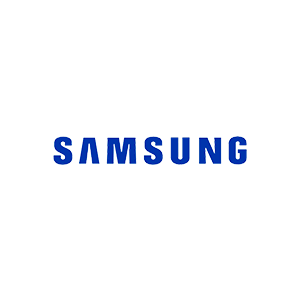apple's worldwide developers Conference has always been the event where the company announces new software capabilities for its devices. However, over the last few years, the software news out of WWDC has been upstaged by hardware announcements. Rather than focusing on apps at recent WWDCs, Apple has used the gathering as an opportunity to unveil its M-series Apple Silicon chips, next-generation Macs, and most recently, the Apple Vision Pro mixed-reality headset.
But this year, Apple pushed its hardware announcements out ahead of WWDC. In April, the company launched the M3-powered MacBook Air (13-inch and 15-inch). In May, it released an all-new M4 chip, along with the latest iPad Pro and iPad Air. With no additional hardware expected at the conference this year, it looks like WWDC will once again focus strictly on new software features—specifically new artificial intelligence capabilities for iPhones, iPads, and Macs.
We'll find out when WWDC 2024 kicks off with a keynote address at 10 am Pacific time on Monday, June 10.
How to Watch the Keynote
The Apple WWDC 2024 keynote will be livestreamed on Monday, June 10, starting at 1 pm Eastern, 10 am Pacific. You can watch it via Apple's site or on its official YouTube channel.
We'll be running a WWDC live blog right here on WIRED. Be sure to join us approximately half an hour before the keynote starts to follow along with our live updates from the event.
What to Expect
Over the past few months, companies like Google, Microsoft, and OpenAI have already debuted their latest AI projects, including updated language learning models, new experimental tools, and even some new devices. Now, it's Apple's turn. And based on rumors, it looks like the company is about to unleash a ton of new AI features across all its operating systems that will not only transform how people use its devices but solidify Apple's position in the fast-moving AI space. According to analysts at Wedbush Securities, Apple's expected push into AI makes this year's WWDC “the most important event for Apple in over a decade.”
As usual, it's important to note that all the information out there about what Apple might talk about at WWDC is mere speculation. While it's highly possible we could see many of the rumored features become a reality—remember, Apple rumors from trusted sources typically end up being true—we suggest tempering expectations.
To help get you caught up before the show, you'll find a breakdown of all the new features expected at this year's WWDC, along with how to tune into the keynote on Monday morning. We'll also be following all the news here on WIRED, complete with a live blog and roundup up of all the big announcements.
iOS 18
At last year's WWDC, Apple steered clear of generative AI—despite its biggest competitors, Google and Microsoft, announcing how both were already making headway. The closest Apple got to generative AI with iOS 17 was improved autocorrect (which uses a “transformer language mode" to correct more types of grammatical errors and provide predictive text recommendations as you type), the ability to detect your dogs and cats in the Photos app (in addition to people), and accessibility features like Point and Speak (where those who are blind or have low vision can read text on a physical object by pointing the phone's camera at it). As former WIRED senior writer Khari Johnson pointed out, Apple took the intuitive AI route instead.
Fast-forward to this year. Google announced a host of generative AI features at Google I/O, and Microsoft debuted an entirely new lineup of PCs at its Build conference dedicated to powering new AI capabilities like Recall, Cocreator, and Windows Studio Effects.
However, it appears Apple is again taking an alternate path toward AI in iOS 18. According to Bloomberg's Mark Gurman, Apple “will unveil a different approach to artificial intelligence, focusing on tools that ordinary consumers can use in their daily lives. The idea is to appeal to a user’s practical side—and leave some of the more whiz-bang features to other companies.” While Apple isn't expected to debut entirely new AI-powered apps for its devices, its approach to generative AI seems like it's going to be more integrated.
In his Power On newsletter late last month, Gurman reported that the updates are all part of a new strategy called Project Greymatter, which includes AI tools that Apple will inject into “core apps” like Photos, Safari, Messages, and Notes—including a smart recap feature that gives you summaries of things like individual texts, emails, notes, documents, and web pages. Additional features could include transcribing voice memos (Apple already introduced the ability to transcribe voice notes with iOS 17), an enhanced Spotlight feature that makes searches faster and more reliable, and improvements to Safari web search.
Gurman notes that Apple is also reportedly developing software that can create custom emoji in real time based on the content of a text message. So you'll have more options to choose from in addition to Apple's current offerings. (As of now, the only way to create anything similar is to use Stickers with iOS 17.) Speaking of text messages, iOS 18 might also include suggested replies, generated by AI, based on the context of the conversation. (The feature might be available on the Mail app too.) According to AppleInsider, we could see a new “Clean Up” feature that will use generative AI to remove objects from your photos, similar to Google's Magic Eraser.
In terms of privacy, Gurman reports that less computing-intensive AI features within iOS 18 will reportedly run entirely on-device, using Apple's Ajax Language Learning Model, while features that use more power will be sent to the cloud. As Bloomberg News reports, by way of Reuters, Apple is planning to use data centers powered by its custom silicon—specifically by putting its processors (reportedly M2 Ultra chips) in cloud-computing servers that can process these AI tasks that can't be handled by the phone itself. According to AppleInsider, it's possible we could also see an onscreen alert before Ajax LLM proceeds with any information from certain apps (like Messages or Safari). This matches the latest report from Bloomberg, which says, according to people familiar with the matter, that Apple “is expected to offer its new AI features as an opt-in service.”
There's a very high probability that Apple will announce some big improvements to Siri. The company is even dropping hints about it; AppleTrack editor in chief Sam Kohl pointed out on X that both the colors and animation on Apple's homepage graphic promoting WWDC match the Siri logo.
In early May, The New York Times reported that the next-generation version of Siri “will include a new generative AI system that will allow it to chat rather than respond to questions one at a time.” The report also claims Siri will do better at handling tasks like creating calendar appointments, setting timers, and adding items to grocery lists—all of which are long overdue improvements.
Gurman's latest Power On newsletter (and earlier report) also claims Apple is revamping Siri by “overhauling the digital assistant with its own large language models.” The update will reportedly allow the iPhone's AI to examine what you're doing on your device and auto-enable Siri's help. This could be anything from asking Siri to forward or delete an email, edit a photo, summarize notifications (that include people, calendar events, locations, and more), or move content between folders. However, it looks like it won't be available at launch this fall, but will be pushed to a future version of iOS 18 sometime next year.
Gurman also reports that we won't see an Apple-designed AI chatbot to rival other versions like OpenAI's ChatGPT, Microsoft's Copilot, or Google's Gemini—despite several reports over the last few months that the company was testing one (internally known as Ajax GPT). In the most recent update on the news, Gurman points out that this could either be because the technology is simply not ready or because Apple doesn't want to deal with the possibility that the chatbot goes “rogue” and puts Apple in potentially embarrassing situations. Instead, the company is reportedly planning on leveraging technology from a third party—specifically OpenAI. In May, Bloomberg reported that Apple was close to completing a deal to bring ChatGPT to iPhone (this is in addition to reports that Apple is also talking to Google about licensing the Gemini assistant). According to Bloomberg, the agreement with OpenAI is set to be announced at WWDC.
Not all of the features coming to iPhones utilize AI. We could see iOS get customizable home screens, where users can not only change the color of app icons but place them wherever they want. According to MacRumors, the app icons would still be locked to an invisible grid, but it's possible iOS 18 will allow users to create columns, rows, and blank spaces in between.
Apple is also expected to announce redesigns to the Settings app and Photo app, improvements to the Mail app, and a new music widget within the Control Center. We might see new features in the Messages app too, like new icons for Tapbacks and effects for individual words rather than an entire text message, MacRumors reports. The Notes app might also be gaining a new audio recording feature, according to AppleInsider. Similar to the Voice Memos, you'll be able to record audio within a note in addition to adding text and images.
Lastly, we could finally see support for the Rich Communication Services messaging standard. Back in November, 9to5Mac reported that Apple announced the feature would launch via a software update later this year. In a statement to the publication, Apple said it “[believes] RCS Universal Profile will offer a better interoperability experience when compared to SMS or MMS.” Essentially, this means iMessage features—like read receipts, reactions, typing indicators, high-resolution videos and photos, and more—will work across both iOS and Android. We may hear a date this support will arrive.
iPadOS 18
Typically, all the things Apple is adding to iOS will show up in iPadOS as well. So, we can expect most (if not all) of the aforementioned iOS 18 stuff to be rolled into iPadOS 18.
It's also worth noting that WWDC is being held only a month after Apple announced its newest M4 chip at its iPad event. It's currently available in the latest iPad Pro, but there aren't any new features to show for it. So, it's safe to assume Apple rushed to announce the new chipset to lay the groundwork for the debut of its AI features, which the new chip has the muscle to run.
Apple did, however, confirm new accessibility features are coming to iPad “later this year” via a press release published in May. These capabilities include the ability to control the iPad with eye tracking, spoken shortcuts that assign custom utterances Siri can understand, and a feature that uses onscreen cues to reduce motion sickness for people looking at their device in a moving vehicle. Hopefully, we'll be able to see demos of these features at the conference.
MacOS 15
As is the case every year, the official name for the latest version of macOS is always a guessing game. Last year, Parker Ortolani, a product manager at Vox Media, tweeted a list of unused names that Apple has apparently trademarked—one of those names being Sonoma, which was used for the current version of macOS. So, the company may go with any of the names that remain. (I'm personally rooting for macOS Mammoth.)
Rumors suggest a redesigned calculator app (exciting!) is coming to Mac. According to AppleInsider, it'll look similar to the iOS version, with rounded buttons and the ability to adjust the size. The app will also come equipped with a history tape for accessing previous calculations and support for Math Notes—which the publication says “will essentially foster integration of the Calculator and Notes applications, giving users the option to create notes with math-related elements or mathematical notation.” Let's hope this means we're finally getting a Calculator app for iPad too.
In late May, AppleInsider also reported that macOS 15 will come with some UI changes. Siri will could have a new monochromatic menu bar icon, a redesigned System Settings app (where apps will be reorganized based on importance), and a new unified menu for page controls in Safari.
Speaking of Safari, we might also see a new Intelligent Search feature that uses the Ajax LLM to pinpoint topics and key phrases from a webpage to generate a summary.
WatchOS 11
Unlike iOS, iPadOS, and macOS, it appears the updates to watchOS won't be as extensive. (The same applies to tvOS 18.) But this tracks, seeing how watchOS 10 was packed with new features like a specialized cycling capability, topographic maps for hiking, mental health tools, and easier navigation between apps.
According to, yet again, Mark Gurman, WatchOS 11 might include a more advanced version of Siri for “on-the-go tasks” (which would make sense since iOS 18 is rumored to include a Siri overhaul) as well as Fitness app upgrades. Aside from that, it's likely a minor update overall. In terms of Apple Watch support, a report from iPhoneSoft via MacRumors, claims that Apple will be dropping support for the Apple Watch Series 4 (which came out in 2018).
VisionOS 2.0
Although the Vision Pro was unveiled at WWDC last year, visionOS was released in February of this year at the same time the mixed-reality headset started shipping. But the next big software update is reportedly already in the works.
In Gurman's Power On newsletter, he says Apple is expanding its catalog of native apps rather than just running iPad versions of them (in compatibility mode) on the headset. As 9to5Mac pointed out, several Apple apps aren't native to visionOS yet including Calendar, Books, News, Podcasts, Reminders, Voice Memos, Stocks, Home, Shortcuts, and Maps. So maybe those will arrive on the face computer.
It's possible we could also see a new “respiration tracking” feature, MacRumors reports. This was discovered by contributor Aaron Perris, who found references to the feature in lines of code within Vision Pro's Mindfulness app. It will apparently give “users an immersive meditation experience using either guided meditations or self-guided sessions” by sensing your rate of breathing. However, it's not clear whether or not this will be included in a visionOS update or if Apple will save it for a future version of the OS.
As with iOS 18 and iPadOS 18, Apple did confirm that new accessibility features are coming to the Vision Pro later this year. Some of the features mentioned in the press release are Live Captions to follow along with dialog in both live conversations and app audio (with the ability to move captions via the window bar during Apple immersive Video), along with a few features that make the Vision Pro more accessible: a color inverter, a setting that changes the transparency of windows and objects in the field of view, and a feature that dims flashing light effects.







